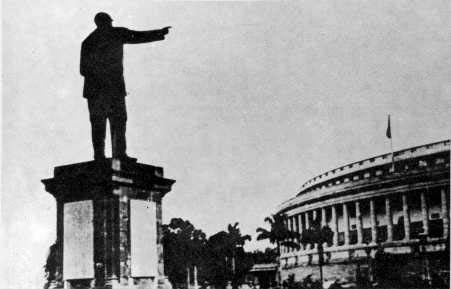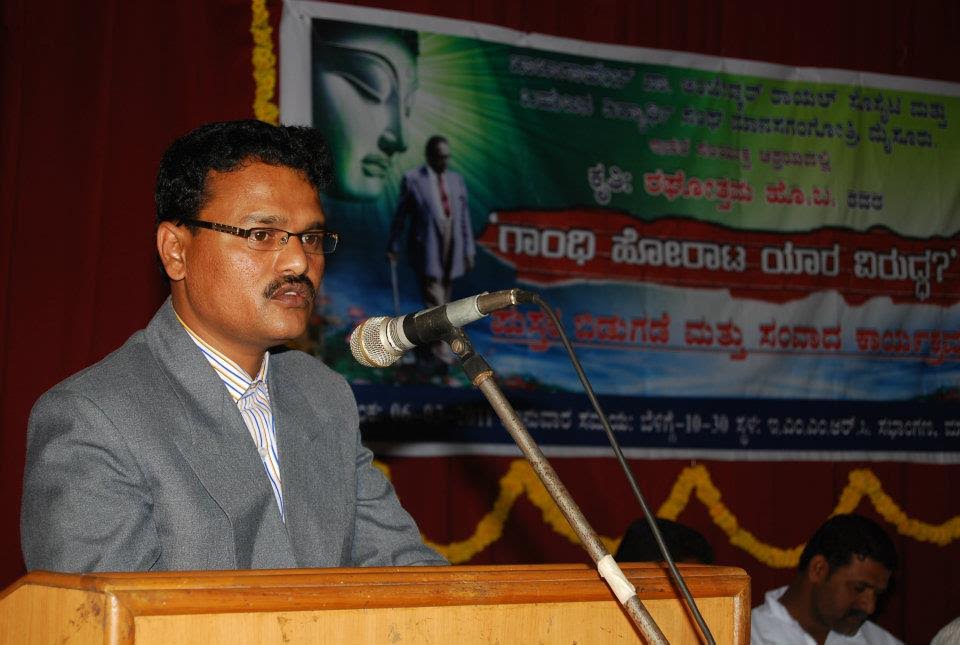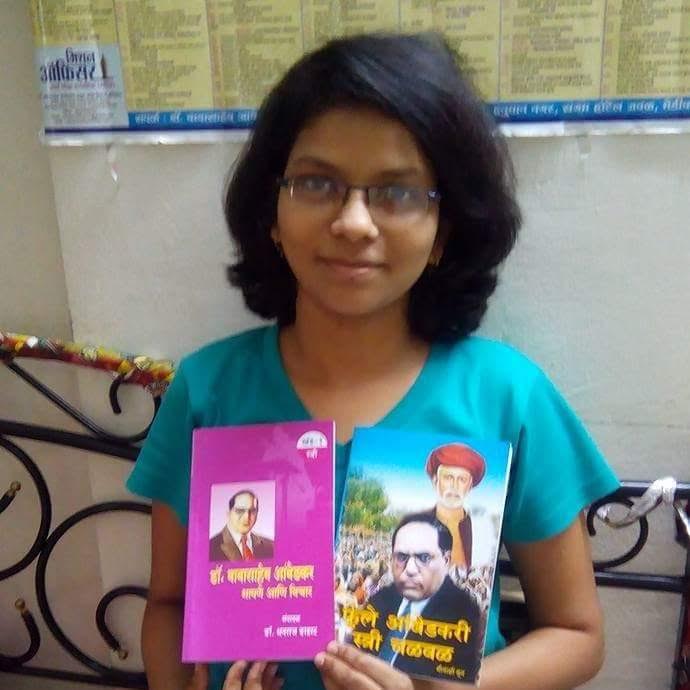Dhruwa R
Is it possible that an academic, a celebrity of sorts, is completely naive about the absence of Ambedkar in Indian pedagogy, and every now and then asks empty rhetorical questions: why students don’t get to read Ambedkar? Is it possible for someone to base one’s writing and empirical understanding from one set of people and manage to denounce them and their literature as being co-opted? Is it possible for someone to condemn other women narrating their sedentary lifestyle in their autobiographies for failing to identify themselves as Brahman, yet, at the same time identify self only as a non-dalit and not a Brahman? And criticize dalits for having done little to claim Ambedkar as a feminist? Is it possible for someone to claim Ambedkar as a feminist and go about proving him to be rhetorical? Yes, it is pretty much possible, since this incredibly complex feat has been achieved by Ms Sharmila Rege, courtesy S Anand. Ms Rege dons the mantle of author of Ambedkar’s writings through her “introductions in the introduction” of the book titled “Against the Madness of Manu”.

Of late, Indian society, appears to be too sensitive to people once they pass away or at least the Indian media would have us believe so. A spectacular display of this “sensitivity” was at its peak when Maharashtra saw the death of its (in)famous right wing demagogue in 2012. The outpouring of nostalgia bordered on the lines of complete exoneration of all the evil deeds of the man, and we were made to witness this sensitivity on all “national” television channels. But just as this demagogue or Nazi Hitler or tyrant Mussolini can’t be absolved of their deeds just because they are dead, similarly, Rege’s intellectual violence, though very subtle and upheld by most left-progressive-liberal scholars can’t go unchecked and uncriticised, just because she’s no more.
She has the distinction of being the “author” of “Ambedkar’s writings” through the promotional efforts of self styled and self-proclaimed “Ambedkar Zealot” S Anand’s factory, Navayana. Navayana stakes claim of being India’s first anti-caste publishing house, notwithstanding the presence of so many publishing houses run by dalitbahujans to keep Ambedkar’s legacy alive, constantly continuing to wage war against the oppressive caste system, often with no help from any quarter.
Ms Rege is hailed as a revolutionary scholar in Indian academia for her writings on caste and for positioning Ambedkar as a feminist. Now, at the beginning of this text as mentioned earlier, in her “introductions in introduction” – which should be understood as going beyond a general preface or introduction – there is an introduction to three sections which again attempts to set the tone as to how the text in those sections should be perceived. These sections cover Ambedkar’s important writings on caste, parts of Riddles in Hinduism, Ambedkar’s stance on Hindu Code Bill, and his speech in parliament relating to the bill.
A question which was raised while resisting the attempted appropriation of Annihilation of Caste is quite relevant here as well. In fact, a quote by Nidhin Shobhana (The Colonization of Ambedkar: Caste Politics behind Roy-Navayana’s Appropriation of Annihilation of Caste ~ A Discussion), would actually sum it up:
Having said that, I would argue, that the process of ‘writing caste’ for Syrian Christians should start with a detailed recovery of their own histories from anti-caste perspectives. This would involve detailed stories of privileges, hatred and identity. There is a need to link the everyday of ‘Syrian Christianhood’ with communities who are situated above and below them in the caste hierarchy. Syrian Christians need to forge dialogues which threaten their caste pride. They should be ready to expose negative histories which explain their existence. If this does not happen, and if Syrian Christians choose to be like the ‘lengthy introducer’ (Arundhati Roy) whom I mentioned in the beginning, they would keep repeating their caste-ordained role. In the introduction, a Christian Bania talks about a Hindu Bania under the pretext of introducing Dr. Babasaheb Ambedkar ~ Nidhin Shobhana*
In her introduction to the book she says: “The feminist legacy of Ambedkar remains to be claimed in its full potential by non-Dalit feminists and Dalit men. This book is a limited effort in that direction by a non-dalit feminist”. Here she identifies herself as a non-dalit writing and reclaiming Ambedkar as a feminist. Elsewhere, she talks of Ambedkarite Utopia – a community based on Ambedkar’s call to “Educate, Organise and Agitate”. And in other instances she talks about Ambedkarites and Dalits separately. So she very skillfully ascribes division among Dalits, as Dalits, Ambedkarites. And as per her conception, there is an Ambedkarite Utopia too.
So, from her claims it is amply clear dalits are not a homogeneous entity, at least in their pursuit of goals and belief systems. Then a natural corollary is, is Non-dalit a homogeneous entity then? Obviously, the answer is no. Then why does she stop by introducing herself only as a Non-dalit? Why couldn’t she dare to identify herself with her true identity, which is of course Brahman?
At one point she questions Brahman women of pre-independence era: “Marathi women’s biographies written between 1910 and 1950 offer varying narratives of companionate marriage. Caste rarely figures here. And if it does, it appears as belonging to someone else – women in the mills or vegetable vendors or to women of a time gone past. Thus the dominant narrative of gender and modernity that has concealed the complicity of Brahman women in class privilege and Brahmanical patriarchy, highlights privileged caste women’s struggle with tradition and their desire to be modern”. Although, this eventually absolves the Brahman women in a way, attributing their ‘complicity’ to the influence of patriarchy, nonetheless she questions why the woman didn’t identify their own Brahman caste.
But Rege’s duplicity lies in her claiming the status of a casteless individual in the 21st century, or a ‘non-dalit’ at times, and this is hypocrisy personified. The very logic applicable to Brahman women of 20th century vis-à-vis caste identity is not applied to Ms Rege. One would have ignored this hypocrisy if this was only limited to a self-serving purpose and not detrimental to Dalits. However, the exalted position taken by Ms Rege continues to inflict structured violence through the hands of Brahman academia which continuously cites her. The universities being the fiefdom of Brahmans to the point where should Ambedkar be alive today, even he too would have needed Rege’s certificate of feminism before he could have spoken anything on women’s rights.
Once her role is clearly defined she’s all set for dispensing all kinds of barbs. Through her entire text she only speculates, confuses the readers, and contradicts herself. She says, ‘challenge posed by Dalit Panthers and Dalit literature came to be co-opted.’ One must understand the context of success and eventual disintegration of Dalit Panthers. For any aggressive organization whether political or otherwise, and especially with the kind of militant/rebellious streak displayed by Dalit Panthers, survival and growth is impossible unless there are strong sympathizers, politically and financially. It is needless to guess, if the assertion of Dalit Panthers would have benefited any political party, be it left, right or centre leaning. Hence, the Dalit Panther’s systemic repression and eventual disintegration was only natural.
I would be happy to be proven wrong if there is a single organization with similar intent, social reality and character, anywhere in the world, which has survived in such hostile conditions as Dalit Panthers was subjected to. So this is a nonsense charge. Though Dalit Panthers may have been dissolved and there may not be a single encompassing organization of Dalits, yet the very fact of continuous assertion by Dalits shows the democratic and lively spirit inherent in dalit movements. Similarly, she continues to quote from dalit literature and yet talks of that too being co-opted. Even today, the only literature being truly driven by people is dalit literature, and the many vidrohi meets happening round the year bear testimony to this. So these are baseless charges. More importantly, these pronouncements on Dalit Panthers and dalit literature appear without any further explanation. For some reason she quotes “personal is political” and goes on to talk of unnecessary details only giving fodder to imagination and never willing to voice her own take, so there is nothing political that could be found from this exploration of the personal.
In her quest to find the reason behind Ambedkar’s absence in the academia she doesn’t find any Brahman academician to hold accountable, she quotes many like Uma Chakravarti, Ashis Nandy, Romila Thapar and many other well known names for various other purposes. But, she makes a scapegoat out of a lonely scholar Y.S. Alone who after some serious thought attributes reason for Ambedkar’s absence and neglect in academia to “academic prejudice”. Needless to guess, this too is a casteless one according to Rege’s conception. This is what a powerful Brahman does invariably – invisibilise caste and becomes a casteless, neutral, law abiding, interpretative Indian.
When narrowed down, this is essentially, nothing but the denouncement of any and every attempt made by dalits to assert via Ambedkar. It is only the upper castes, mainly Brahman, who are entitled to interpret Ambedkar and will continue to appropriate him. The archiving, circulation and interpretation of Ambedkar’s writings by dalits is not worth considering or could be easily ridiculed as a limited one, even as it appropriated. However, the truth has been always contrary to what has been propagated by the Rege kind of intellectual appropriators. The demagogue from Maharashtra mentioned in the beginning is, needless to mention, Bal Thackeray, who was defeated on his home turf, Mumbai, by these very dalits when he had to give up on the attempt at trying to ban Ambedkar’s “Riddles in Hinduism” back in 1990s. It’s the dalit bahujans who have kept Ambedkar’s legacy and its meanings alive and not some ivory tower intellectuals.
* Nidhin Shobhana, Caste in the name of Christ: An angry note the Syrian Christian Caste, Hatred in the belly: Politics behind the appropriation of Dr Ambedkar’s writings, Page 141. The Shared Mirror Publishing House, 2015.
~~~
Dhruwa R., is an entrepreneur based in Mumbai.
Cartoon by Unnamati Syama Sundar.










